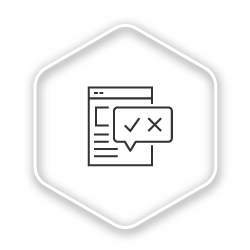Your business needs effective supply chain and product portfolio management protocols to thrive and grow. After all, your supply chain is a crucial aspect of your business, no matter what you sell, or which services you provide. It develops, stores, and sells the products on which your brand is based.
If your chain is not cohesive, efficient, and scalable, chances are your business is not operating to its full potential. This is why it’s essential to reassess and update your supply chain from every angle consistently.
When you dedicate time and effort to examining your operational processes and streamlining them wherever you can, you can ensure you get the most power and the best performance out of your system.
When you streamline your product portfolio and shape it to align with your customer’s demands and needs, it produces incredible value for your business. Decreasing the complexity of your ranges allows you to simplify your operations and enhance the effectiveness of your sales department, lowering overhead costs and bettering your customers’ experience at the same time.

1. Assess your portfolio’s strategic value
The whole point of your supply chain is to move products from manufacturing to sales. If your products aren’t adequately supporting your company, it may be time to remove them from your product portfolio. Alternatively, you could adjust, update, or redevelop them to enhance their profitability.
This process goes far beyond the basic monetary value of your products. It also pertains to how hard a product works for your company. If a certain product or service is not profitable, viable, or in line with your business goals, you should focus on ways to change its performance - or scrap it outright.
Having products that are obsolete in your inventory can cost you money and are a drain on resources.

2. Trace your products’ profitability cycles
Once you’ve trimmed your product portfolio and ensured the products you offer are in line with your brand’s vision, it’s time to consider finances.
Start by assessing the Gross Profit (GP) of each item in your portfolio, along with the production vs sale prices involved.
Next, look at the net margins of your portfolio, considering operational and marketing expenses and product distribution costs. The total pricing performance of each product must be determined if you’re going to gauge how each one performs accurately.
Remember, if a product costs too much to market or distribute, it may not bring in enough profit to prove viable in the long run.

3. Scrutinise your customer service
Do your products and services provide real quality and value to your customers? Is your business performing at its peak in terms of customer loyalty and retention? To find out, inspect the queries, compliments, and complaints your customer service department deals with regularly.
You may pick up patterns of conversation around specific products over time. If any of them attract numerous complaints, it might be time to remove them from your portfolio or improve them according to customers’ expectations.

4. Review your complete supply chain
Knowing how each of your products moves down your supply chain is vital to keeping your operational costs low. You need to assess the process from start to finish to gain a good understanding of the costs involved.
Take note of any bottlenecks or issues that cause delays, along with any redundant steps that prolong the process. The longer your supply chain process takes, the slimmer your profits will be.
It may be advisable to switch from an SKU-based approach to a portfolio-centric one to manage your supply chain properly. Additionally, it’s advisable to integrate your supply chain management with your pricing process to keep your cash flow consistent.
From that point, your goal should be to align your products and services with current customer buying behaviors and use the information you have on hand to manage your portfolio consistently.

5. Ensure supply chain transparency
Transparency within a business’s supply chain is critical as it will keep its operations running smoothly. It also works towards winning the trust of your vendors and customers and monitoring your systems consistently to make sure they are working to your benefit.
It’s important to note that good quality competitive data can also be helpful. Market data can drastically strengthen your position during negotiations with your suppliers. As you become better aware of your competitors’ prices and general market trends, actions taken by your vendors will become more meaningful and easily interpreted.
Market analytics can also be used to evaluate the market, pinpoint your most immediate rivals in your sector, and adjust your product portfolio accordingly.

6. Integrate your business systems
Your supply chain is the core hub of your company’s operations. Every part of your business should work towards keeping that chain moving smoothly, from manufacturing to sales, to customer support.
If every internal system in your business is integrated with your chain, all the inner workings of your company will run more smoothly.

7. Grant partners and suppliers proper access
Every supply chain has multiple moving parts, both within your business and outside of it. If you can grant your external partners access to your internal system, they’ll be better equipped to operate in line with your protocols.
They don’t need to have full access to every part of your company. However, if manufacturers, suppliers, stakeholders, and logistical professionals know what’s going on in your business, they can update their information to keep your respective systems in sync.

8. Eradicate duplicated data
A major challenge in supply chain management is presented by manually punching in data from one system to the next to keep workflow efficient.
A great example of this is accounting staff who may need to enter supplier invoices manually, or stock employees manually entering the same data to update their inventory records.
Duplicate data reduces your efficiency and theoretically doubles your staff force’s workload, leaving them with less time for more important tasks.

9. Integrate mobile technology
Mobile technology holds the power to optimize processes and your business’s workflow massively. By using modern software on laptops, smartphones, and tablets, you can significantly streamline data capture, checklist processes, and other time-consuming tasks.
This will improve your processes and your supply chain at the same time.

10. Improve your system’s scalability
A big mistake that many companies make is to develop a supply chain system that’s relatively static, or incapable of dealing with larger numbers.
Assess your existing supply chain system and gauge the extent to which it can scale, and how easy the process of scaling will be. Whether you own a recently established start-up or a well-established business, ensuring that your supply chain is scalable is the key to your continued success, no matter which sector you operate in.
Conclusion
Businesses of all sizes and industries must welcome change continuously to keep their supply chains operating efficiently. Regular portfolio assessment also ensures that companies’ product offerings are appealing to customers’ changing needs, which creates a stable bottom line.


